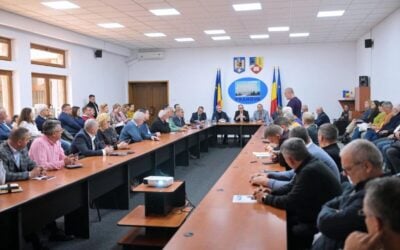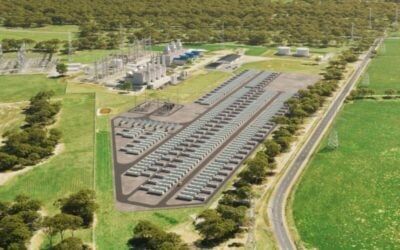
Germany and the UK are currently Europe’s ‘hottest’ markets for battery storage, but others present exciting opportunities, too.
That was one of the key takeaways from the panel discussion ‘The Big Debate: Where are the Hottest European Storage Markets?’ at this week’s Energy Storage Summit EU 2025, hosted by our publisher Solar Media.
Enjoy 12 months of exclusive analysis
- Regular insight and analysis of the industry’s biggest developments
- In-depth interviews with the industry’s leading figures
- Annual digital subscription to the PV Tech Power journal
- Discounts on Solar Media’s portfolio of events, in-person and virtual
Moderator Anna Darmani, principal analyst at Wood Mackenzie for energy storage in the EMEA region, said that in years gone by, it had been difficult to find experts experienced in Europe’s markets other than the UK.
The UK still leads the continent by deployments, but the landscape has changed dramatically, Darmani said. According to Wood Mackenzie data, as of April last year, there were 65GWh of cumulative installs across Europe, and Germany’s development pipeline currently stands at over 230GWh.
Alongside Darmani, views were heard from representatives from energy storage system integrators Fluence, Wärtsilä ES&O and Trina Storage, who shared the stage with an energy storage transaction advisor from real estate investor JLL and a sales director from technology provider Merus Power.
A handful of markets present the best opportunities for Europe’s battery storage deployments. Each has its own nuances and potential challenges, of which investors should be aware.
Europe’s markets will undergo changes
Lucy Plant, sales director for the UK and Ireland at Fluence said, for example, that Ireland had been one of the leading markets after the introduction of the DS3 ancillary services programme in 2016. The programme was also aligned with Ireland’s renewable energy goals for enabling non-synchronous penetration of renewables to the grid.
“When the batteries were delivered the most value, they got paid the most money. That led to over a gigawatt of energy storage being installed in the Irish market,” Plant said.
However, DS3 is coming to an end in April 2026 and a successor programme will not be introduced until December that year, and Plant said there is now “real uncertainty” in that market.
Under DS3, revenues in excess of €100,000/MW/year (US$104,525/MW/year) are common, but it has now been “over a year since a battery energy storage project was transacted in that market,” Plant said.
Meanwhile, the UK has experienced declines in revenues as the ancillary services-led opportunities have saturated but projects are still transacting because of the market’s well-publicised ability to stack revenues from multiple streams.
The excitement around the German market is based largely on the depth and liquidity of energy trading markets and the high level of price volatility, as Energy-Storage.news has heard from multiple sources including Roberto Jimenez, executive director at BW ESS.
Most industry watchers would say Germany is the ‘hottest’ market right now, with intraday and day-ahead trading revenues at €100,000 per cycle, Max Stirling from JLL said at the summit. However, with such a long development pipeline, there might be potential for saturation.
Stirling added that the “easiest countries to build in might also hold the biggest risk” for that reason, also noting that there may be changes in regulation further down the line that present unforeseen challenges.
Germany’s 230GWh development pipeline only represents applications and not agreed grid connections and Stirling said the country’s transmission and distribution system operators are “already overwhelmed” with applications. However, while that may be a “big warning sign,” it may not be a critical blow for development prospects.
Other German market dynamics developers should note include the recent grid fee exemption to 2029, and the BKZ, a construction fee which Stirling said “can be quite punitive depending on the region” a project is being built in, ranging from about €25,000/MW to as much as €140,000/MW.
Reform of the BKZ is expected to be forthcoming and Max Stirling said that the regime ultimately needs to align with system planners’ mapping of where storage is most needed.
Italy and Poland’s long-term contracted revenue opportunities
Caroline Wright, leading strategic market development in Europe for Wärtsilä ES&O, said that the German market will also benefit from the national battery storage strategy. While its market opportunities are merchant, and do not offer the comfort of contracted revenues—at least until the mooted capacity market is introduced—the depth of trading volumes and volatility make it attractive.
That said, other markets do promise contracted returns for successful developers, investors and asset owners, Wright said, with Italy and Poland currently chief among them.
Those revenues may be lower than in merchant-led regions where the rewards may be higher and it will ultimately be investors’ risk appetite that leads them into one market or the other, or indeed to diversify risk across different types of market.
Fluence’s Lucy Plant said that Italy’s MACSE auctions, offering 17-year contracts driven by the transmission system operator (TSO) Terna, certainly make it a hot market with around 50GWh of procurements expected.
Again, though, the nuances are there. MACSE assets will have an 8-hour duration requirement, which will drive down costs. Developers should be wary that a Capex-driven market might present technology risks if they select providers or integrators based on price alone, according to Plant.
The Fluence sales director cited Poland’s capacity market (CM) as a clear driver of activity there, echoed by others, including Wright, who noted that 6GW of storage had been awarded CM contracts despite a 62% derating and Trina Storage sales director for Europe Juan Ceballos.
With opportunity relatively concentrated in Europe, Ceballos said that around two-thirds of the projects Trina Storage expects to deploy in the next year or so will be in five countries: the UK, Germany, Italy, Spain and Poland.
Other markets will likely open up and Ceballos said that by 2026, the Netherlands—which has already seen some big projects get to final investment decision (FID)—will be added to that list.
‘Turning fundamental need into profitability’
In response to a question from moderator Anna Darmani on what makes a market attractive, Markus Ovaskainen from Merus Power said that where policymakers have turned their fundamental need for energy storage into profitability, investment will follow.
“A good market is one where you can get something done,” Ovaskainen said.
“If you look at an empty site and can visualise that becoming a project, that matters. You can look at potential market size for a long time and get lost in the details.”
Ovaskainen gave some airtime to the Nordic markets, which while driven by ancillary services and therefore relatively shallow in the conventional estimation of forecasts, offer some of the highest internal rates of return (IRR) among European markets.
Citing examples of projects Merus Power has worked on in Finland and Sweden, Ovaskainen said the relatively small size of the individual countries does mean the trading opportunities are not as deep as in Germany, and revenues are not contracted. However, Finland had some of Europe’s highest numbers of days with negative pricing last year, and the trend is set to continue.
The markets are still some way off from saturation too. Nordic TSOs often have open data portals showing how much BESS is prequalified for ancillary service market entry, and Finland’s FinGrid only shows about 80MW of such assets on its portal.
Other regions of interest might include the Baltic region, which has just disconnected from the BRELL grid it shared with Russia, Ovaskainen said, while JLL’s Max Stirling cited the Benelux region including the Netherlands and Belgium as presenting future opportunity and predicted a return to elevated market activity for the UK BESS sector.
Overall, while there is a diversity of interesting markets to be found, longer-term Stirling agreed with the assessment that markets driven by fundamental needs will win over investors.
That means seeking “long-term revenue opportunities from markets with arbitrage rather than shallow ancillary services and genuine volatility, not just short-term [price] spreads,” Stirling said.
Indeed, while the UK has seen its collapse of ancillary services prices, “the fundamentals are still there,” he said.
The Energy Storage Summit EU is part of the industry-leading series held around the world by our publisher Solar Media, with exclusive discounts on tickets for ESN Premium subscribers.
This article has been amended from its original form to reflect that Juan Ceballos is Trina Storage sales director for Europe, not global, as previously stated.






